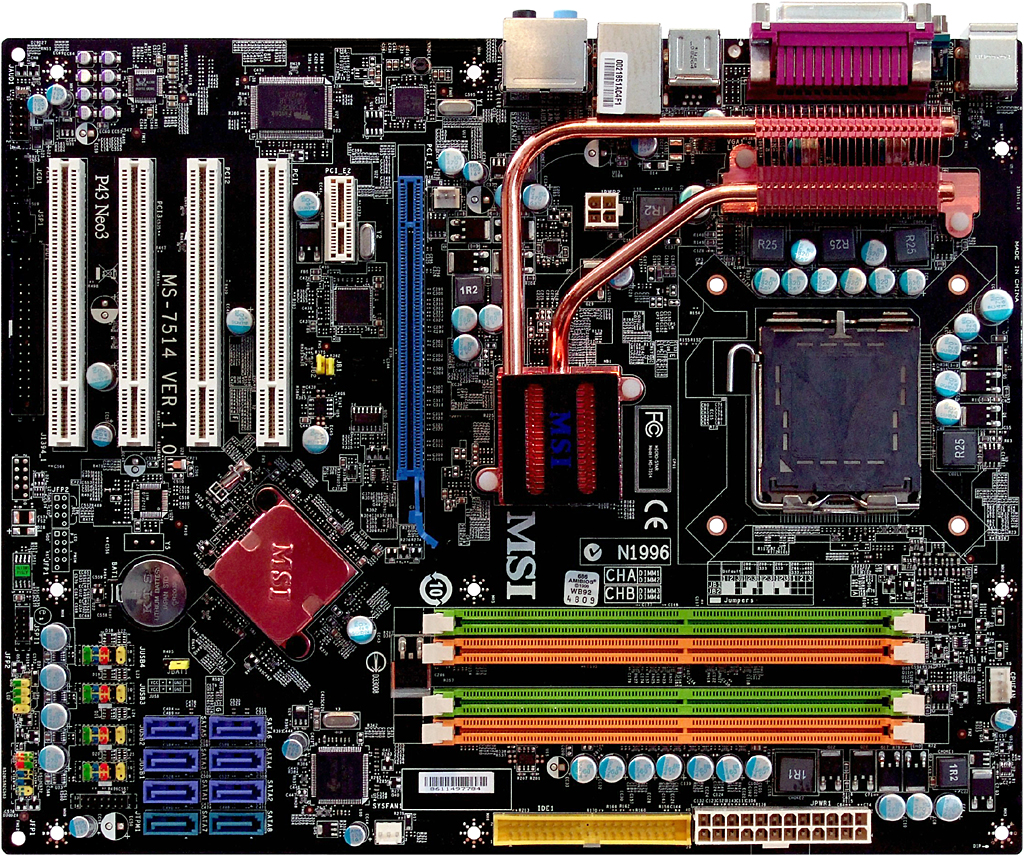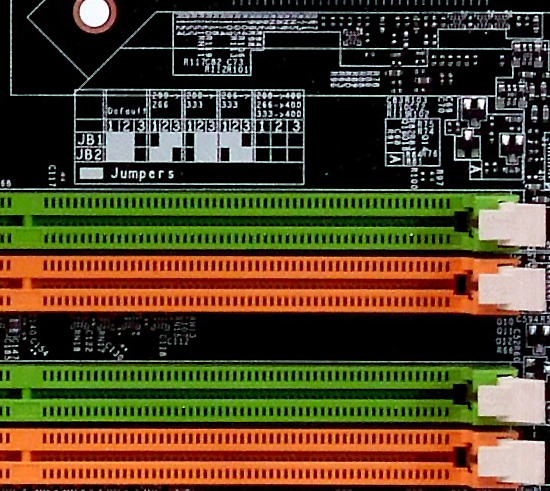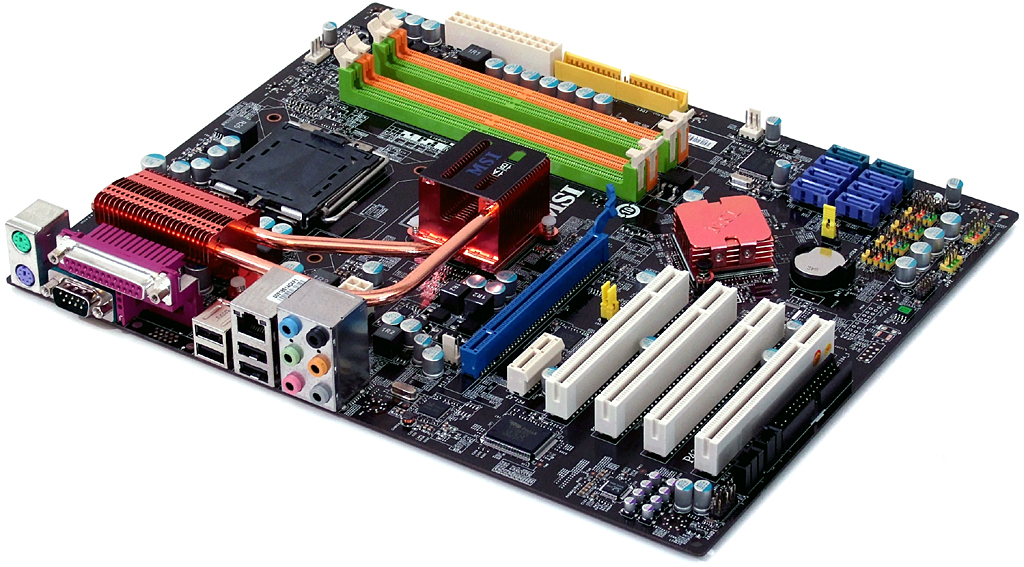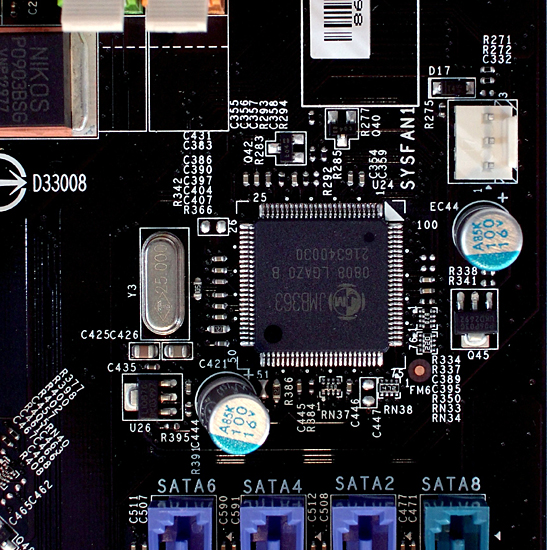Roundup: Six Core 2 Motherboards Under $100
MSI P43 Neo3-F
As the largest motherboard in today’s comparison, the MSI P43 Neo3-F is also the most ornate. Competing with traditional ATX designs such as the Biostar TP43D2-A7 and the Jetway BI-500, the P43 Neo3-F gets attention with its simple northbridge-to-VRM heat pipe cooling system. Yet, a $85 Web price lets MSI undercut those competitors
The standard ATX P43 Neo3-F is better-supported by ATX cases because it’s wide enough to reach the third column of standoffs on a motherboard tray. Competing products typically come up about an inch short. By making its P43 Neo3-F a full-sized part, MSI is able to reduce motherboard flex during memory installation compared to the competition.
Buyers looking for a great layout might be in for a small surprise, as this is an instance where skill is more important than size. For example, the no-longer-required Ultra ATA connector is located conveniently along the front edge, while the rarely used floppy header is pushed under the bottom PCI slot. Also, while the 24-pin ATX/EPS main connector is conveniently placed at the motherboard’s front edge, the ATX12V connector is pushed between the chipset northbridge and rear panel ports. Builders must run the ATX12V around the CPU cooler when using traditional tower cases or around the graphics card when using cases that have the power supply at the bottom.
The P43 Neo3-F has enough room above its single PCIe x16 slot so that MSI might have considered putting an x1 slot there. Instead, engineers put other circuitry in this location, making the board a six-slot design. For many users, the P43 Neo3-F won’t hold as many cards as the competing six-slot TP43D2-A7 from Biostar, because Biostar eliminated the slot beneath the graphics card rather than the one above it. The P43 Neo3-F’s sole PCIe x1 slot is in a position that builders often leave empty to aid single-slot graphics cooling or cover with a double-slot graphics cooler.
Then there’s the matter of the front-panel audio header located in the P43 Neo3-F’s bottom rear corner. This has certainly been the standard location for many years, but for almost as many years, people have had trouble running a cable there from upper-bay or top-panel audio jacks. The rear-bottom-corner location didn’t even make sense when it first debuted, because Windows 95 required a CD-Audio cable to be stretched over a similar path.
A feature present on the P43 Neo3-F that we don’t usually see on modern motherboards is the pair of FSB jumpers located between the PCIe x16 and uppermost PCI slot. Set to automatically detect bus speeds by default, a small chart next to the memory slots details the selection of every possible bus-speed increase.
| MSI P43 Neo3-F (Revision 1.0) | |
|---|---|
| Northbridge | Intel P43 Express |
| Southbridge | Intel ICH10 |
| Voltage Regulator | Four Phases |
| BIOS | V1.5 (09/11/2008) |
| 333.3MHz (FSB1333) | 334.2 MHz (+0.26%) |
| Clock Generator | ICS 9LPRS113AKLF |
| Connectors and Interfaces | |
| Onboard | 1x PCIe 2.0 x161x PCIe x14x PCI4x USB 2.0 (2 ports per connector)1x Floppy1x Ultra ATA (2-drives)8x Serial ATA 3.0Gb/s1x Front Panel Audio1x CD-Audio In1x S/P-DIF Out1x Fan 4 pins (CPU)2x Fan 3 pins (Chassis) |
| IO panel | 2x PS2 (keyboard + mouse)6x USB 2.01x RJ-45 Network6x Analog Audio (7.1 Channel + Mic-In + Line-In) |
| Mass Storage Controllers | |
| Intel ICH10 | 6x SATA 3.0 Gb/s |
| JMicron JMB363 | 1x Ultra ATA-133 (2-drives)2x SATA 3.0Gb/s |
| Network | |
| Realtek RTL8111C PCI-E | Gigabit LAN Controller |
| Audio | |
| Realtek ALC888 HDA | 7.1 + 2 channel Multi-Streaming Output |
While it doesn’t have high-end features such as CrossFire or FireWire, the MSI P43 Neo3-F still carries enough features to fool some buyers into thinking that it could be a mid-priced part. Examples include solid capacitors in all locations and a middle-market audio controller, which are both unmatched by rival products from Biostar and Jetway.
Get Tom's Hardware's best news and in-depth reviews, straight to your inbox.
Realtek’s ALC888 offers an impressive 97.1 db signal-to-noise ratio and multi-streaming independent front-panel and rear-panel outputs.
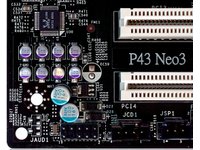
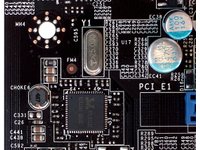
Realtek’s RTL8111C uses a PCIe interface to provide full bandwidth to a single Gigabit Ethernet port.
Last and possibly least is the ATA controller from JMicron. The JMB363 supports up to two Ultra ATA drives from a single cable at speeds up to 133 MB/s, plus two SATA devices.
Current page: MSI P43 Neo3-F
Prev Page BI-500 Software, BIOS, And Accessories Next Page P43 Neo3-F Software, BIOS, and Accessories-
V3NOM interesting, although pretty much anyone building a P775 system these days would spend a bit more than $100... and somethings really weird with this commenting thing cos i can't read what i'm typing... it just ... doesnt fill the box? just when i type something it instantly goes to the left instead of filling the box... but anyway, interesting if a bit useless article.Reply -
cangelini FWIW, the issue with text disappearing from the commenting box as you're typing is something I've reported and m waiting for a fix still. Thanks for confirming that it's still an issue.Reply -
rjcorrin Yes - everyone has money shooting out of their pantless ass to buy more expensive motherboards. I use a gigabyte Ep35 DS3L and am very happy with it. What is a >$100 board going to give me? Is it just that you want to waste money? I'm guessing you are one of those people who carry a balance on your credit card and lease a Lexus - you debt-carrying phag.Reply -
jsc "What is a >$100 board going to give me?Reply
I have a DS3P becuae i need the exrta SATA ports. -
I run the I.T. department for a couple small businesses, and the sub $100 motherboard is almost essential in today's economy. Sure I could use a $120-$150 motherboard, DDR3, 10000 RPM hard drive, and all kinds of other things, but I would end up with a system that is only marginal faster in business applications for 3+ times the price. Take one of the G3x or G4x motherboards, 2GB DDR2, Intel E7x00 CPU and 80GB+ HDD and you have a system that will meet the needs of a good majority of businesses and home users. I am personally a gamer and can see the value in the higher end components; but there are a lot of other market segments out there where this makes financial sense.Reply
-
rjcorrin "I have a DS3P becuae i need the exrta SATA ports."Reply
The DS3L has 4 Sata ports which could easily handle 3 terabytes and a DVD drive. You could have saved money by editing down your porn collection and deleting your stolen .iso's of the entire "Friday the 13th" collection. Then you would have had enough space to install "Mavis Beacon Teaches Touch Typing". That would give you something else to do with your hands during your "adult film" marathons.
Did you happen to notice that the comment box detects your errors and underlines them in red? -
rjcorrin "I have a DS3P becuae i need the exrta SATA ports."Reply
The DS3L has 4 Sata ports which could easily handle 3 terabytes and a DVD drive. You could have saved money by editing down your porn collection and deleting your stolen .iso's of the entire "Friday the 13th" collection. Then you would have had enough space to install "Mavis Beacon Teaches Touch Typing". That would give you something else to do with your hands during your "adult film" marathons.
Did you happen to notice that the comment box detects your errors and underlines them in red?
